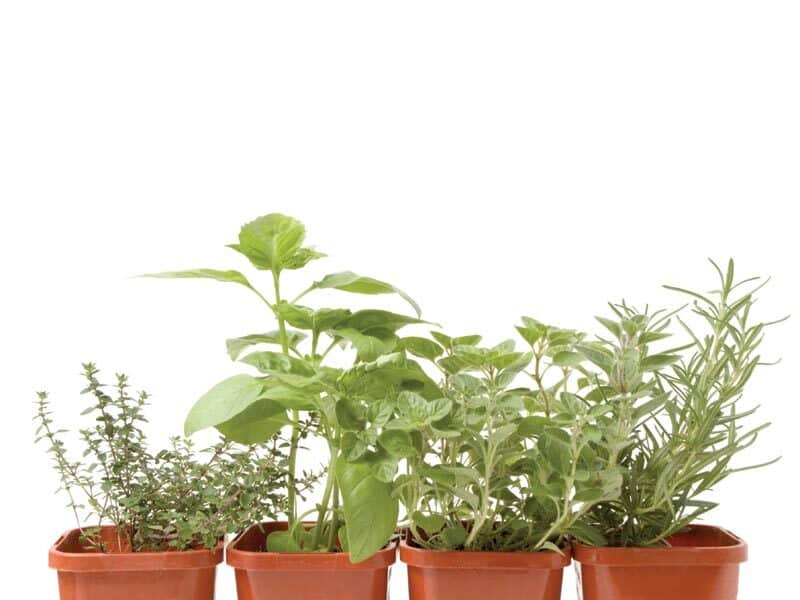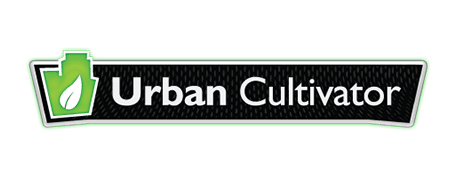
23 Jul 6 Essentials to an Indoor Herb Garden
The only thing better than fresh herbs is growing and harvesting your own fresh herbs. It’s convenient, inexpensive, and simply great to have complete control of what you put in your food.
An indoor herb garden is easy to put together when you know what to do. Here are some essentials that you’ll want to go over before you get it started.
1. Start strong and choose a good plant
This seems like a no-brainer, but believe it or not, many walk away from their gardening store with some less-than-optimal looking herb plants.
When purchasing a new herb plant, check it thoroughly. Are there any brown spots on the leaves? Does any of it look wilted? Is it already past its prime?
Ask yourself these questions to ensure that what you’re starting off with won’t leave a literal bad taste in your mouth.
Some plants are also better suited for indoor growing than others. Such herbs as parsley, basil, sage and thyme are great starter indoor plants.
2. Know where to grow…
Location is very important. You must ensure that your plants receive plenty of light, and maybe even some shade. Generally, herbs require at least six hours of sunlight per day.
If where you’re growing your herbs doesn’t have access to natural light, you can substitute that with artificial lights. Use LED or HID lights for best results. Your plants would need 14-16 hours of light.
Here’s a bonus tip: rotate your plant so that all of its foliage receives the appropriate amount of light!
Not all plants can withstand the cold, so for those that are not perennial plants, i.e. plants that cannot survive for over a year, you’ll have to find a space that doesn’t expose your plants to too much cold air.
As the climate can vastly differ depending on where you live, do a bit of research on your local weather. This will ensure that your herb plants won’t be blasted by some freak snowstorm. Even the humidity in your space can affect how much water your plants need.
3. … and what to grow with
Some herbs grow better together than others. Mint, for example, sprawls out and can be incredibly invasive, taking up your entire pot. So, it wouldn’t make much sense for you to plant that right next to your delicate little thyme plant.
Know which herbs you should give their own little homes. Mint is one of these, so get a big pot for your mint plant, and let it grow wild and free!
4. Drainage
The rule of (green)thumb is that if your soil is dry to the touch, then you should probably water your plant.
But sometimes, you might overwater your plant. Thankfully, that shouldn’t do too much damage so long as you have given your roots the proper drainage.
In colder weather, your plant will take a bit longer drinking up that water, and if there’s no place for that water to go, your roots might rot. This is why proper drainage is so important.
Adding drain holes to the bottom of your pots is a great solution to this. You can also mix your soil with perlite and peat to encourage drainage.
5. Know thy enemy
The brilliant thing about herbs is that many of them are already pest-free. Good news for those who hate bugs, right?
Ensuring that your plants are healthy and well-watered will prevent infestations. Of course, though, nothing is perfect. Despite the fact that many herbs are pest-free, and may even repel insects, these persistent little creatures may still end up in your herb garden.
In knowing your plant, you can also know what sort of common pests might try to eat. For example, the Japanese beetle loves basil. Scales love bay, rosemary, and myrtle. Slugs and snails love basil and sorrel. Check out this handy pest/herb guide from the Dummies Guide to learn more about pests and their favorite foods.
At the first sign of an infestation, remove the affected leaves before they affect the healthy ones. Natural remedies may also be administered that will leave your plants healthy and the bugs not so lucky.
Not all bugs are bad, though! Such insects as ladybugs can do your job for you and remove the unwanted pests.
6. Harvest often, but appropriately
One way to ensure that your plants aren’t ruined by nasty pests, you should always keep them trimmed, cutting back excess leaves, and prune often (or at least when the leaves ready to be harvested).
Having said that, you should leave the big, luscious leaves at the base of your plants in tact. They act as your plants’ solar panels. Pluck all of those, and it’ll be harder for your plant to receive the amount of light they need.
So, the best thing to do is to mix it up, and prune some mature and new leaves. Not only do you get some great herbs for your cooking, but you’ll also encourage your plant to branch out and grow more densely for a lush looking plant.

With those tips, you’ll have your indoor herb garden going in no time. Of course, if you are limited in time, space, and, well, patience, an Urban Cultivator residential unit is a great alternative.
You can grow up to 40 varieties of herbs, microgreens, flowers, and vegetables. Using hydroponics, it’s a lot cleaner than potted soil, and because of its automated controls, lighting and temperature is already controlled for.
Do you have any tips for indoor growing? Let us know in the comments section!

